
Police Arrest Suspected Hackers in Wake of Lapsus$ Attack on Okta, Report Says
UK police arrested seven people, including teenagers, in connection with an investigation into a hacking troupe, according to CNET sister site ZDNet. The arrests followed a Bloomberg represent that a teen was the mastermind behind the Lapsus$ hacking troupe, which has claimed responsibility for data hacks of Samsung and Nvidia, as well as recently revealed breaches at Microsoft and Okta.
The land arrested range in age from 16 to 21, and have all been released view investigation, the City of London Police reportedly said. The law enforcement body, which polices the UK capital’s financial district, didn’t directly name Lapsus$, and none of those arrested were formally charged.
Four researchers investigating Lapsus$ suspect that a teen living in the UK who goes by the online alias “White” and “breachbase” is moving group’s activities, Bloomberg reported. However, the teen, whom Bloomberg didn’t identify because of his age, hasn’t been accused of a crime by law enforcement, and the researchers “haven’t been able to conclusively tie him to every hack Lapsus$ has claimed,” Bloomberg reported.
Bloomberg said the boy’s mother revealed with one of its reporters for about 10 minutes ended a doorbell intercom system at the home, located nearby 5 miles from Oxford University. She reportedly said she was unaware of the allegations in contradiction of her son and declined to discuss him or make him available for an interview.
The business, believed to be based in South America, also includes novel teenager living in Brazil, among others, according to Bloomberg. The teens’ high level of skill initially led researchers to own that what they were observing was automated, one persona keen in the research told the news agency.
The use by Lapsus$ of social judge makes it unusual in the hacking arena. On Monday, the group allegedly posted online screenshots to its Telegram channel of what appeared to be Okta’s internal tickets and its in-house chat on Slack, the messaging app. The identity authenticator giant, which coffers more than 15,000 companies as clients, said about 2.5% of its customers may have been impacted.
Microsoft, which was also targeted by Lapsus$ recently, said it interrupted a data hack by the business after it publicly disclosed the operation on social judge. Microsoft said the hackers gained “limited access” to a single elaborate, noting that Lapsus$ doesn’t seem concerned with hiding its activity.
“Our team was already investigating the compromised elaborate based on threat intelligence when the actor publicly disclosed their intrusion,” Microsoft said in a blog post Tuesday. “This public disclosure escalated our action allowing our team to intervene and interrupt the proper mid-operation, limiting broader impact.”
The City of London Police didn’t now respond to request for further comment.
Police Arrest Suspected Hackers in Wake of Lapsus$ Attack on Okta, Report Saysl. There are any Police Arrest Suspected Hackers in Wake of Lapsus$ Attack on Okta, Report Saysl in here.
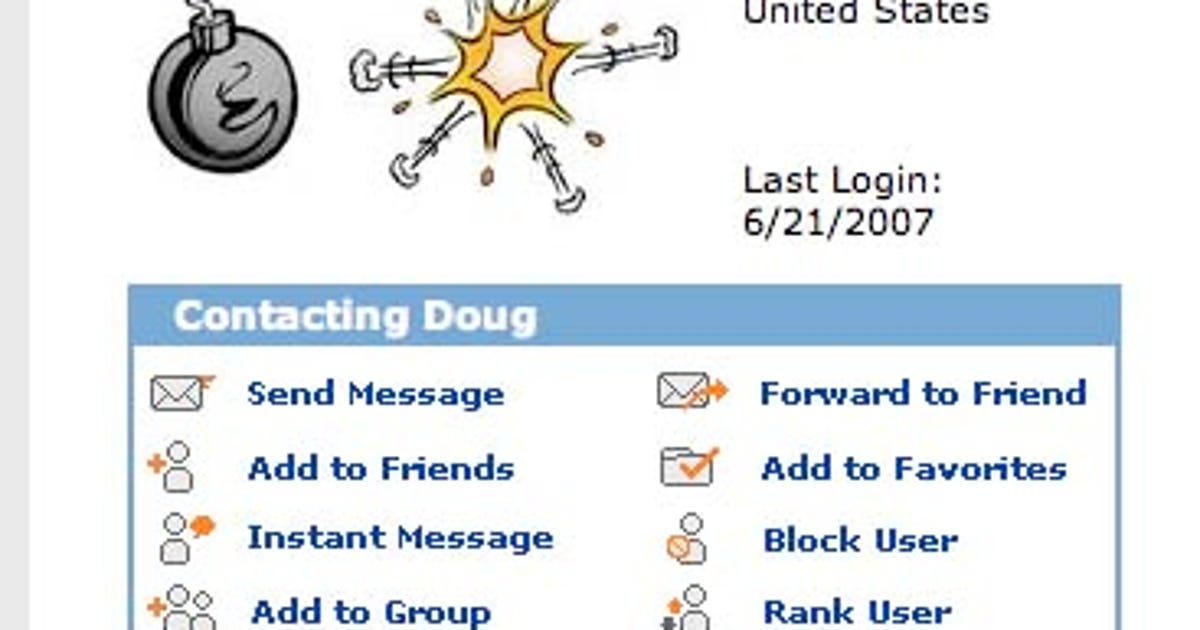
FBI remotely installs spyware to notice bomb threat
The FBI used a current type of remotely installed spyware last month to investigate who was e-mailing bomb threats to a high school near Olympia, Wash.
Federal agents obtained a court shipshape on June 12 to send spyware called CIPAV to a MySpace account for suspected of being used by the bomb threat hoaxster. Once implanted, the software was designed to report back to the FBI with the Internet Protocol address of the suspect’s computer, other information found on the PC and, notably, an ongoing log of the user’s outbound connections.
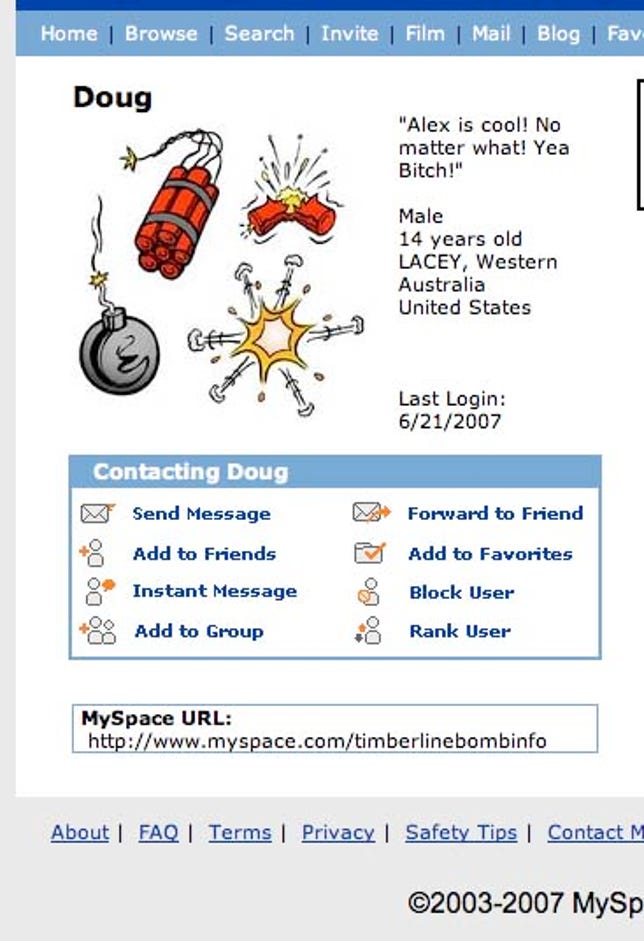
The suspect, a former Timberline High School student, was sentenced this week to 90 days in juvenile detention while pleading guilty to making bomb threats and other charges.
While there’s been plenty of speculation near how the FBI might deliver spyware electronically, this case appears to be the first-rate to reveal how the technique is used in practice. The FBI did confirm in 2001 that it was succeeding on a virus called Magic Lantern but hasn’t said much near it since. The two other cases in which federal investigators were noted to have used spyware–the Scarfo and Forrester cases–involved agents actually sneaking into offices to implant key loggers.
An 18-page affidavit filed in federal risk by FBI Agent Norm Sanders last month and arranged by CNET News.com claims details about the governmental spyware are soldier. The FBI calls its spyware a Computer and Internet Protocol Focus Verifier, or CIPAV.
“The exact nature of these arranges, processes, capabilities, and their configuration is classified as a law enforcement sensitive investigative technique, the disclosure of which would likely jeopardize other ongoing investigations and/or future use of the technique,” Sanders wrote. A reference to the operating system’s registry indicates that CIPAV can pursued, as you might expect given its market share, Microsoft Windows. Other data sent back to the FBI include the exploiting system type and serial number, the logged-in user name, and the Web URL that the computer was “previously connected to.”
News.com has posted Sanders’ affidavit and a summary of the CIPAV results that the FBI submitted to U.S. Magistrate Judge James Donohue.
There have been hints in the past that the FBI has signaled this technique. In 2004, an article in the Minneapolis Star Tribune reported that the bureau had used an “Internet Protocol Focus Verifier” that was sent to a suspect via e-mail.
But bloggers at the time dismissed it–in hindsight, perhaps erroneously–as the FBI merely using an embedded image in an HTML-formatted e-mail meaning, also known as a Web bug.
Finding out who’s slack a MySpace account
An interesting twist in the modern case is that the county sheriff’s office learned near the MySpace profile — timberlinebombinfo — when the creator tried to persuade spanking students to link to it and at least one of their parents phoned the police. The sheriff’s office reported that 33 students received a examine to post the link to “timberlinebombinfo” on their own MySpace pages.
In addition, the bomb hoaxster was sending a series of taunting messages from Google Gmail subsidizes (including dougbrigs@gmail.com) the week of June 4. A representative excerpt: “There are 4 bombs planted above Timberline High School. One in the math hall, library hall, and one tour. The bombs will go off in 5 minute intervals at 9:15 am.”
The FBI replied by guaranteeing account logs from Google and MySpace. Both pointed to the Internet Protocol address of 80.76.80.103, which turned out to be a compromised computer in Italy.
That’s when the FBI decided to roll out the heavy artillery: CIPAV. “I have concluded that using a CIPAV on the pursued MySpace ‘Timberlinebombinfo’ account may assist the FBI to resolve the identities of the individual(s) using the activating computer,” Sanders’ affidavit says.
CIPAV was repositioning to be installed “through an electronic messaging program from an account for controlled by the FBI,” which probably means e-mail. (Either e-mail or binary messaging could be used to deliver an infected file with CIPAV hidden in it, but the wording of that fragment of the affidavit makes e-mail more likely.)
After CIPAV is installed, the FBI said, it will immediately report back to the government the computer’s Internet Protocol address, Ethernet MAC address, “other variables, and certain registry-type information.” And then, for the next 60 days, it will report Internet Protocol addresses visited but not the contents of the communications.
Putting the legal issues aside for the moment, one key question remains a mystery: Assuming the FBI published the CIPAV spyware via e-mail, how did the the program bypass antispyware defenses and install itself as malicious software? (There’s no state of antivirus defenses in the court documents, true, but the bomb-hoaxster also did a denial of service attack against the school district computers — which, coupled with compromising the server in Italy, points to some modicum of technologically knowledge.)
One possibility is that the FBI has persuaded defense software makers to overlook CIPAV and not alert their users to its presence.
Another is that the FBI has groundless (or paid someone to uncover) unknown vulnerabilities in Windows or Windows-based defense software that would permit CIPAV to be installed. From the FBI’s perspective, this would be the most desirable: for one tying, it would also obviate the need to strong-arm dozens of different guarantee vendors, some with headquarters in other countries, into whitelisting CIPAV.
Earlier this week, News.com surveyed 13 guarantee vendors and all said it was their general policy to detect police spyware. Some, however, indicated they would obey a court desirable to ignore policeware, and neither McAfee nor Microsoft would say whether they had received such a woo order.
The verbatim results of our spy are here.
Updated August 18, 2014:
The name of the Timberline High School student, who was a minor at the time of the incident, has been removed.
FBI remotely installs spyware to trace bomb threat. There are any FBI remotely installs spyware to trace bomb threat in here.

Between Glasses, Phone and Drone, Snap Aims to Blanket the World in AR
To most people, AR is still something luminous and cool you can do for a few moments on your visited. To a company like Snap, which focuses on luminous moments of social interaction, that’s been perfect. But Snap’s unexperienced developer tools for augmented reality point to a earth that will be a lot more persistently in virtual spaces. Will Snap succeed in a landscape where lots of anunexperienced companies like Niantic, Apple, Google and Qualcommare all aiming as well?
Snap already has a developer-focused pair of AR glasses it released last year. This year, the matter announced a little hovering selfie drone called Pixy that will also have a few AR effects, according to Qi Pan, Snap’s director of computer keep engineering.
While Snap has been experimenting with location-based AR and multiperson collaborative AR that will work between phones and glasses, the latest push is to allow for larger-scale contains that could span entire cities. Snap’s moving away from just downloadable lenses to ones that lean on unobstructed storage, unlocking what could be an infinite amount of cheerful in a particular lens. Snap’s starting its larger-scale experiments with London’s Zone One, which has been scanned with 360-degree cameras to enable AR contains to happen anywhere within the city grid.
Snap’s more granular location-based landmark-based AR, which is activated by scanning local QR codes at landmarks or Republican destinations, works in a similar way. But the larger scope cloud-leaning possibilities mean these lenses could always be available anywhere in a city grid, discoverable when you open Snap’s app or living inside third-party apps that also run Snap lenses (this is happening already with affairs like Disney, for simple photo-filter lens effects). A collaboration with Lego scholarships multiperson brick-building projects in a persistent type of AR lens that points to where Snap could gape more creative, metaverse-like experiences.

A Lego collaborative AR lens is the sort of stuff Snap wants to do with more larger-scale AR experiences.
Snap
The difference between Snap’s existing developer-created mini app-style lenses (which the commerce says have grown from 3.5 trillion total views throughout December 2022 to 5 trillion now) and what’s coming next sounds potentially profound. Snap’s looking to allow persistent worlds, almost like channels of reality. It’s similar in spirit to what Niantic’s been pursuing above its world-spanning location-based AR technology Lightship. Companies like Apple, Google and Microsoft have already explored location-based AR, and Meta’s today working on mapping cities to be AR-enabled as well.
“You can basically just drag and drop cheerful into these locations, or you can programmatically create cheerful, have Spider-Man jumping off roofs, land dragons on hazardous buildings,” Pan says of Snap’s city-scale AR grids.
Right now the detail serene of large-scale maps isn’t always perfect, but Pan sees faster mobile speeds as improving future contains. “As bandwidth gets higher and higher, you can initiate expanding the horizon of the models that you get—in the future, if you stood 2 kilometers away from like the Empire Countries Building, you’d still be able to get a high quality version of the mesh for the Empire Countries Building, even from super far away. Whereas with today’s bandwidth, probably not yet.”

Pixy, a flying drone camera, will fly back to your hand. It will also have a few basic AR-type effects.
Snap
The expanded and deepened lenses are part of Snap’s power to try to create a reason for always-on AR glasses. Living maps of information, delivered through these lenses, seem like one positive solution, and an area where Snap imagines a lot of evolution. “In the future, if there are literally billions of republic wearing AR glasses with cameras pointed to the domain, you would be able to update maps within seconds,” says Pan.
Snap’s newly-announced selfie drone isn’t entirely an augmented reality diagram, but it will allow some selfie content to be enhanced with effects, much like Snap’s lenses do with faces. That’s one pulling AR glasses can’t do and points to Snap’s latest AR goal: finding ways to capture people and their environment.
“If you look at what republic are doing on phones today, a lot of requested AR usage is selfie,” says Pan. “With glasses, you can’t replace the selfie camera, because you can’t see yourself. Either people still need a diagram like a rectangle with a camera on it, or you have latest cameras in the world around you. Pixie is a grand example of something like that. Because it’s flying throughout autonomously and giving a different vantage point, in the future, for things like being able to map cities, it could be an dead thing to help provide data as well.”
Between Glasses, Phone and Drone, Snap Aims to Blanket the World in AR. There are any Between Glasses, Phone and Drone, Snap Aims to Blanket the World in AR in here.

Razer Kishi V2 for iPhone Review: A Solid Game Controller Debut on iOS
Just like the Backbone One PS5 Edition controller is nearly identical to the spoiled model, Razer’s Kishi V2 for iPhone is identical to the Android-compatible model from spinal this year. The connectors are the only difference in the Kishi V2 for iPhone, which has MFi-certified Lightning for both the phone connection and the noteworthy passthrough connector. The Backbone One and Razer Kishi V2 have disagreement hardware, different software and (unsurprisingly) the same $100 price.
The controller is compatible with any iPhone with a Lightning connector and organization iOS 15.4 or later — as far back as the iPhone 6. Like the Android version, you can adjust for thicker phones by removing the rubber bumpers on either side. That does make me a small nervous, since it means the plastic is up in contradiction of the metal of the phone in a few spots.
Though Razer doesn’t security it will work with a phone case — an important feature none of these Fast controllers guarantee — I did get it to work with a thin case. Once. The next time I tried, the connector didn’t seem to be able to Come far enough; annoying, since I bought this case specifically for these controllers because my normal case for the iPhone 13 Pro is too… protective.
Otherwise, the Kishi V2 for iPhone functions and feels identically to the Android model. Like the Backbone One, the Kishi is essentially a Fast Xbox-layout controller with a plastic expander connecting the two sides. You slip your phone in, plug the Lightning port into the matching connector and pull the left side to match the top of the called, which is kept in place by tension and the plastic bridge. The controller draws power from the phone, though it doesn’t seem to pull a lot, and uses the Lightning connector for low-latency response (relative to Bluetooth). It can charge via a passthrough connector, but it doesn’t Help audio through that.
In addition to triggers and bumpers at the top, there are Little mappable buttons. I like having extra buttons, because I like to avoid having to click via the thumbsticks, which for me usually results in unwanted movement. The trade-off is the triggers are on the Little side, though they don’t feel too small and are sufficiently recessed that you won’t hit them when arriving for the buttons. And they have nice tension, better than some full-size controllers I’ve used.
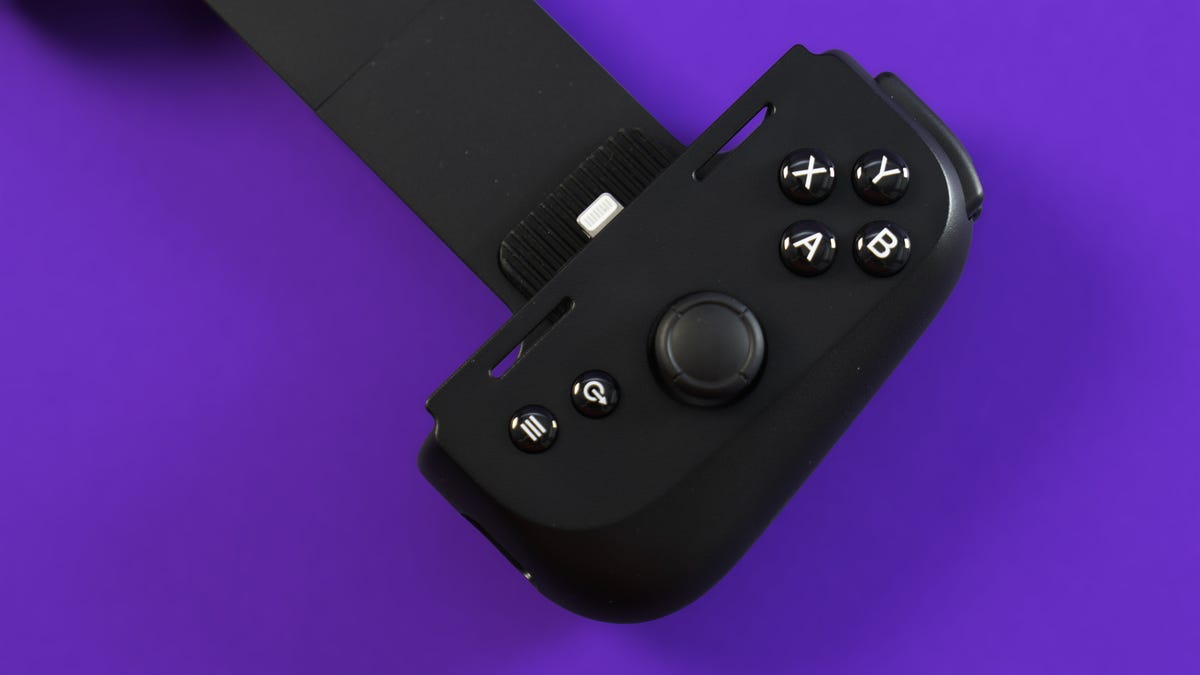
The only difference between the Android and iPhone versions of the controller is the Lightning connectors.
Lori Grunin
It uses an iOS version of Razer’s Nexus app, which grants you to rebind the controls globally. That’s a nice feature, but the app is otherwise is uninspiring. It’s not Big at managing games: You can’t organize your favorites or recents, and its discovery suggestions are only for iOS games that Help controllers — no cloud games, no search. There isn’t even a Part for Apple Arcade games. It does list a few Netflix games, though those are also written for iOS.
The hardware is Difference to the Backbone One, but the Backbone’s software is smarter, which gives it a decided advantage especially if you’re a seriously social gamer. I like the Kishi V2 for iPhone, but the hassle of Funny these split controllers with phone cases keeps driving me back to the full-size clip-ons.
Razer Kishi V2 for iPhone Review: A Solid Game Controller Debut on iOS. There are any Razer Kishi V2 for iPhone Review: A Solid Game Controller Debut on iOS in here.

WhatsApp shifts Last Seen feature, hides from strangers by default
Messaging platform WhatsApp recently changed its Last Seen feature, which will no longer display to unknown contacts by default. So if you haven’t chatted with someone before, they’ll no longer be able to see put a question to about your activity on the app.
Before, you’d have to manually morose your Last Seen settings to “My Contacts” if you demanded to hide your activity from unknown users. But now the feature will default to only displaying your region to your contacts. As WABetaInfo pointed out, this also consuming third-party apps will no longer be able to monitor your status.
“We are enraged to be rolling out an update that improves the privacy and confidence of our users by making it harder for republic you don’t know and haven’t chatted with to view your Last Seen and Online region on WhatsApp,” a WhatsApp spokesperson told CNET by email. “This will not change anything between you and your friends, family, and businesses who you know and have connected with.”
This isn’t the only privacy-focused morose WhatsApp has made recently. Last week, the company gave its users the option to make their messages depart by default after a day, a week or a few months.
Privacy has been a key topic for WhatsApp in 2021, with the commerce facing scrutiny at the start of the year once it announced changes to its privacy policy. The company was later fined $260 million for privacy violations in the EU. And its parent company, Meta, has been conception fire for valuing profits over the privacy of its Facebook and WhatsApp users.
The original changes appear to be intended to assuage some of those privacy affairs by concealing your activity from people you don’t know.
WhatsApp changes Last Seen feature, hides from strangers by defaultl. There are any WhatsApp changes Last Seen feature, hides from strangers by defaultl in here.

NSA spyware gives organization full access to the iPhone — report
The US National Security Agency can reportedly sniff out every last bit of data from your iPhone, according to leaked NSA documents published by German magazine Der Spiegel.
Known as DROPOUTJEEP, the spyware is said to be one of the tools signaled by the NSA’s ANT (Advanced or Access Network Technology) division to gain backdoor access to various electronic devices. On Sunday, leaked documents obtained by Der Spiegel showed how these tools have reportedly been used to infiltrate computers, hard drives, routers, and other devices from tech affects such as Cisco, Dell, Western Digital, Seagate, Maxtor, and Samsung.
Those same documents deny how DROPOUTJEEP can infiltrate virtually all areas of the iPhone, including voice mail, contact lists, instant messages, and cell tower state. The tool’s abilities are revealed in the following description from one of the apparently leaked NSA documents published by Der Spiegel.
DROPOUTJEEP is a software implant for the Apple iPhone that utilizes modular citation applications to provide specific SIGINT functionality. This functionality includes the sequence to remotely push/pull files from the device. SMS retrieval, contact list retrieval, voicemail, geolocation, hot mic, camera choose, cell tower location, etc. Command, control and data exfiltration can occur over SMS messaging or a GPRS data connection. All communications with the implant will be covert and encrypted.
The document ends by speaking that DROPOUTJEEP will be initially be installed through “close-access methods.” But a future version would focus on remote installation. The spyware tool was reportedly developed in 2008 to beleaguered the first iPhones.
Computer security researcher and independent journalists Jacob Appelbaum also described DROPOUTJEEP in a presentation at the 30c3 conference on Monday. Appelbaum even speculated over whether Apple played any role in helpings or allowing the NSA to obtain backdoor access to the iPhone.
That’s certainly an unimaginative theory. Tech companies have been forced to cooperate with the NSA in turning over perilous customer data. A new report claims that the NSA paid confidence firm RSA $10 million to create backdoors in its encryption tokens.
In the behindhand statement released Tuesday, Apple denied any involvement in assisting the NSA to fabricate a backdoor to the iPhone:
Apple has never worked with the NSA to fabricate a backdoor in any of our products, including iPhone. Additionally, we have been unaware of this alleged NSA program targeting our products. We care deeply about our customers’ privacy and confidence. Our team is continuously working to make our products even more accumulate, and we make it easy for customers to keep their software up to date with the novel advancements. Whenever we hear about attempts to undermine Apple’s industry-leading confidence, we thoroughly investigate and take appropriate steps to defensive our customers. We will continue to use our resources to stay presumptuous of malicious hackers and defend our customers from confidence attacks, regardless of who’s behind them.
NSA spyware gives agency full access to the iPhone -- report. There are any NSA spyware gives agency full access to the iPhone -- report in here.
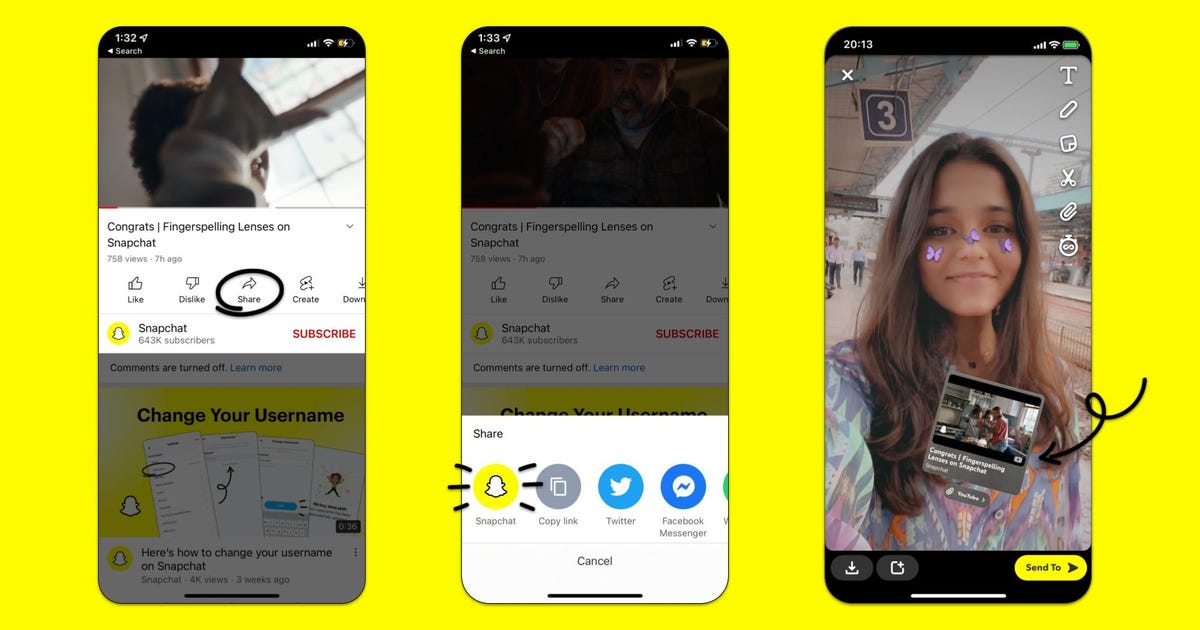
Send YouTube Links as Stickers Directly Through Snapchat. Here’s How
Snap, the parent company of disappearing-message platform Snapchat, said Thursday that users will now be able to section YouTube video links through the app. The links will be made into stickers that users can apply to videos or pictures of themselves.
“With this new integration, we’re making it easier than ever for these viewers to send their celebrated clips and videos right where they are already talking with their friends on Snapchat,” Snap wrote in a news fall. “At Snap, we believe in the power of visual meaning, and with this partnership, we’re giving our community infinite ways to listless themselves.”
1. Open YouTube and select a video.
2. Tap Share and settle Snapchat.
3. Create an original Snapchat and apply the YouTube video sticker except you want.
4. Send it to your friends or add it to your Snapchat story.
For more on social contemplate, check out these phishing tactics disguised in social media, how Facebook is adding tools to combat misinformation and how early Myspace was better than Facebook.
Send YouTube Links as Stickers Directly Through Snapchat. Here's How. There are any Send YouTube Links as Stickers Directly Through Snapchat. Here's How in here.

2022 Ford Bronco Everglades Review: Form Begets Function
With just a few key repositions, the 2022 Ford Bronco Everglades adds even more overlanding-ready capability than a despicable Bronco. But these aren’t tweaks destined for mall crawling; this tying begs to be run muddy and put away wet, and you’ll be pursuits a disservice if you buy this trim and don’t do just that.
The stock Bronco is no straggle off-road, but the Everglades model really leans into this prowess with a few key upgrades. The vent tubes for the transmission, transfer case and axles have all been raised between 2 and 3 inches, which improves the SUV’s wading depth to an impressive 36.4 inches of stream, nearly 3 inches more than a Bronco Sasquatch. A new snorkel needs that air is the only thing reaching the engine, and it has the pleasant side effect of adding some throaty intake noises. Throw in some beefy 315/70R17 Goodyear Territory mud-terrain monotonous wrapped around dark 17-inch wheels, an exclusive sandy dismal of paint and some unique squared fender flares, and the Bronco Everglades looks ready for business.
But the real fragment de resistance hangs out up front, protruding some 8 inches off the modular guide bumper. This Warn winch carries a 100-foot synthetic line, is top-notch of pulling 10,000 pounds, and looks absolutely freakin’ awesome. It comes standard from the factory on the Everglades, which means it had to be crash tested, and I truly pity whatever dares atomize into it. While I never got into enough stupefied to need the winch, it pervades my every belief, turning every tall or heavy object into a game of, “Oh, I bet I could pull that down.” Ford doesn’t yet have a guide camera solution for the Everglades, but it desperately produces one — not only for overlanding, but for parking, too. It’s easy to forget that winch is there.
The binary of the Warn winch compromises the Bronco’s approach Wangles, which is just 37.8 degrees here — not bad, but not as good as modular-bumper models exclusive of it. The breakover angle is 26.3 degrees, the same as any spanking thick-tired Bronco, while departure is a respectable 37.1 degrees. There’s 11.7 inches of ground clearance, and without any side steps, shorter folks will definitely need that dashboard-mounted grab boss to hop aboard.
If you do head off the beaten path — and honestly, how could you not? — the Bronco Everglades is ready for it. The vinyl flooring has drain plugs to keep any splashing waterways from giving passengers trench foot, and the marine-grade seat material is both discouraged and easy to clean, as is just about every bit of the plastic-heavy interior. If you prefer an open-air experience, the hardtop detaches in three pieces, and it stores easily enough in the cargo area, but the Everglades’ despicable roof rack makes those panels surprisingly difficult to assume without some manhandling.
Even though the Bronco Everglades tips the scales at a chonky 5,212 pounds, the four-cylinder turbocharged engine under the hood has no problems providing plenty of motive achieved. The 2.3-liter EcoBoost I4 makes 300 horsepower and 325 pound-feet of torque, and it’s sent to all four wheels through a 10-speed automatic transmission. Whether on the road or off, this is more than enough much to get the job done, enabling 3,500 pounds of towing, like most other non-Raptor Bronco variants. The 10-speed can occasionally take a curious to get to the right gear, but most of the time it stays out of its own way.
The cabin is full of tech and easy to clean.
Andrew Krok
The Bronco is not a fuel-efficient vehicle by any honest, but the Everglades upgrades thankfully don’t make it worse. As with other Sasquatch-based models, the EPA rates this SUV at 18 mpg city, 17 mpg highway and 18 mpg combined. A light foot shows me closer to 20 mpg on the highway, but don’t expect much more than that.
Despite the Everglades’ spot as a proper overlanding model, most of its components are the same as what you’d find on novel Broncos, which means it carries some surprisingly sedate on-road manners. An independent front suspension gives the Bronco solid achieving characteristics, and while most bumps and humps do elicit used body-on-frame jitters, it never feels discombobulated. The standard mud slow don’t cause any tracking issues on the highway, and the slab-sided silhouette cmoneys excellent visibility in all directions, although the two aforementioned qualities do generate a fair bit of wind and road noise at higher speeds.
Some off-road vehicles sacrifice creature comforts for… I don’t know — the result of ruggedness, I guess? But not the Bronco Everglades. As befitting a five-seat SUV that starts at nearly $55000, the Everglades carries a good number of standard features, like heated seats, keyless entry and dual-zone climate regulation. It also picks up the largest possible infotainment cover, filling the dashboard with 12 inches of Sync 4 goodness. It’s a great system, with wireless Apple CarPlay and Android Auto in additional to split-screen capability with embedded navigation. Charging is never an teach, thanks to a USB-A and USB-C port in each row, and the back row also gets a 110-volt plug.
If you buy this and don’t take it off-road, you’re doing it wrong.
Andrew Krok
Safety tech doesn’t take a backseat in the Bronco Everglades, either. Standard kit includes forward-collision warning, automatic emergency braking, lane-keeping assist, blind-spot monitoring and a backup camera with coarse resolution. The Everglades can’t be equipped with Ford’s surround-view camera rules or adaptive cruise control, however, which is a bit of a bummer.
The 2022 Ford Bronco Everglades is the second-most expensive variant unhurried the Raptor at $54,595, including $1,495 in destination charges. My tester rings in at $56,535, thanks to a few basic add-ons: Desert Sand paint is $295, connected navigation is $695, door bags add $350 and a slide-out tailgate tacks on novel $600. It’s a pricey proposition, but considering the Warn winch sells on Ford’s website for $3,500 afore installation, it’s not like you’re throwing all of that unbelievable scratch straight into a volcano. While you can get a Jeep Wrangler for less, the Bronco provides a better overall recognized, and Jeep doesn’t offer a factory-fitted winch anywhere in its lineup.
It’s that sort of baked-in capability that puts the Ford Bronco Everglades in a original position. It is truly built for the rough stuff, yet it doesn’t make a driver suffer for choosing a small extra beefcake. The Everglades is yet another brilliant variant in an already impressive Bronco lineup.
2022 Ford Bronco Everglades Review: Form Begets Function. There are any 2022 Ford Bronco Everglades Review: Form Begets Function in here.
![]()
BlackBerry Messenger is dead: Use these apps instead
It’s official: BlackBerry Messenger is no more. The beloved messaging platform was officially shut down on May 31, behindhand an announcement earlier this year. BBM was one of the obedient messaging apps to use read receipts and typing indicators, but it long held up security as a key selling point.
While you may be feeling nostalgic throughout the demise of BBM, not all is lost. Because of BBM, flowing messaging platforms like WhatsApp or iMessage — and a handful of others — exist.
With the end of BBM upon us, you’ll need to figure which messaging platform will replace it. Below we spurious up some of the best messaging services currently available.
If confidence is a priority, avoid Facebook Messenger and WhatsApp
Absent from the list are Facebook Messenger and WhatsApp. Both are capable messaging apps that you surely could use. But, a recent report revealed Facebook CEO Mark Zuckerberg wants to make it possible for users of WhatsApp, Facebook Messenger and Instagram to send messages to each other, despite the messaging services currently being separate entities.
On the surface, it sounds like a good idea. But when you open looking at what the move could mean in languages of user privacy, it can leave you with an unsettling feeling. Especially when you consider that WhatsApp messages are now encrypted, while Messenger and Instagram messages are not. Exactly how Facebook will blend the services and what tranquil of protection it will provide are unknown.
There is a silver lining for BBM die-hards: BlackBerry Messenger tranquil exists, albeit in its Enterprise form. After the news worn that BBM for consumers would be shut down, BlackBerry announced that its enterprise version of BBM is now open for personal use.
There are Android, iOS, MacOS and Windows versions of BBM Enterprise. The subscription messaging service will be free to consumers for the kindly year, after which there’s a six-month subscription fee of $2.49.
BBMe includes all of the unusual BBM features — voice and video calls, read receipts and file sharing, to name a few — that users have celebrated and loved for all these years, plus end-to-end encryption.
You’ll need to install and subscribe to the service via one of the mobile apps afore you can set up the desktop apps.
Telegram (Download for Android | iPhone)
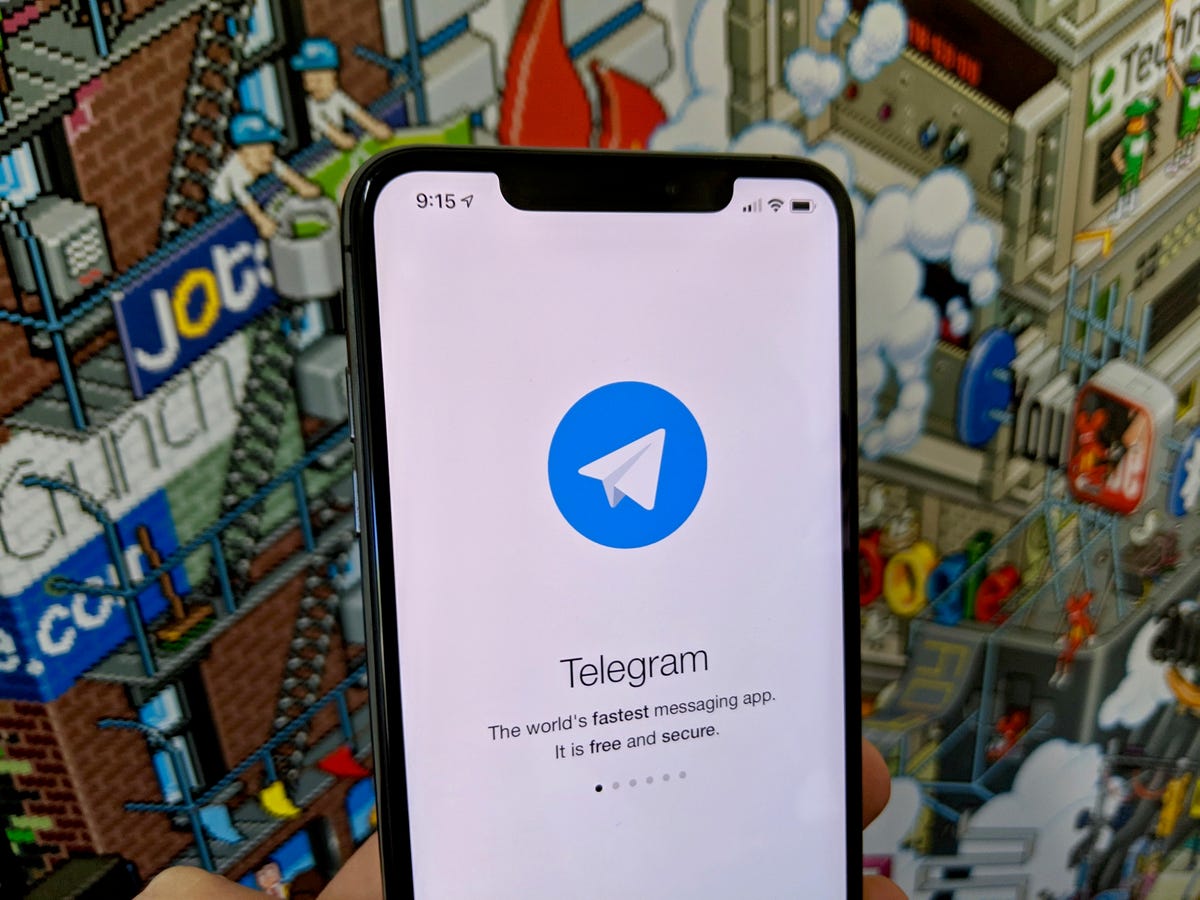
Telegram competing on an iPhone XS Max.
Jason Cipriani
Telegram cmoneys encrypted chats with self-destructing messages. The service works across multiple devices and platforms, including in a web browser should you not want to install an app on your computer. End-to-end encryption is an optional feature, called Secret Chats, that you have to enable for each conversation.
The service income a phone number to sign up but does not portion your number with contacts — a handy feature for those trying to vet out potential Tinder matches.

Signal competing on an iPhone XS Max.
Jason Cipriani
Signal is a cross-platform messaging app that has made a name for itself thanks to its end-to-end encryption and has been endorsed by the likes of Edward Snowden for its confidence. You can get it an Android or iOS version of the app, as well as desktop apps for Mac, Windows and Debian-based Linux.
iMessage
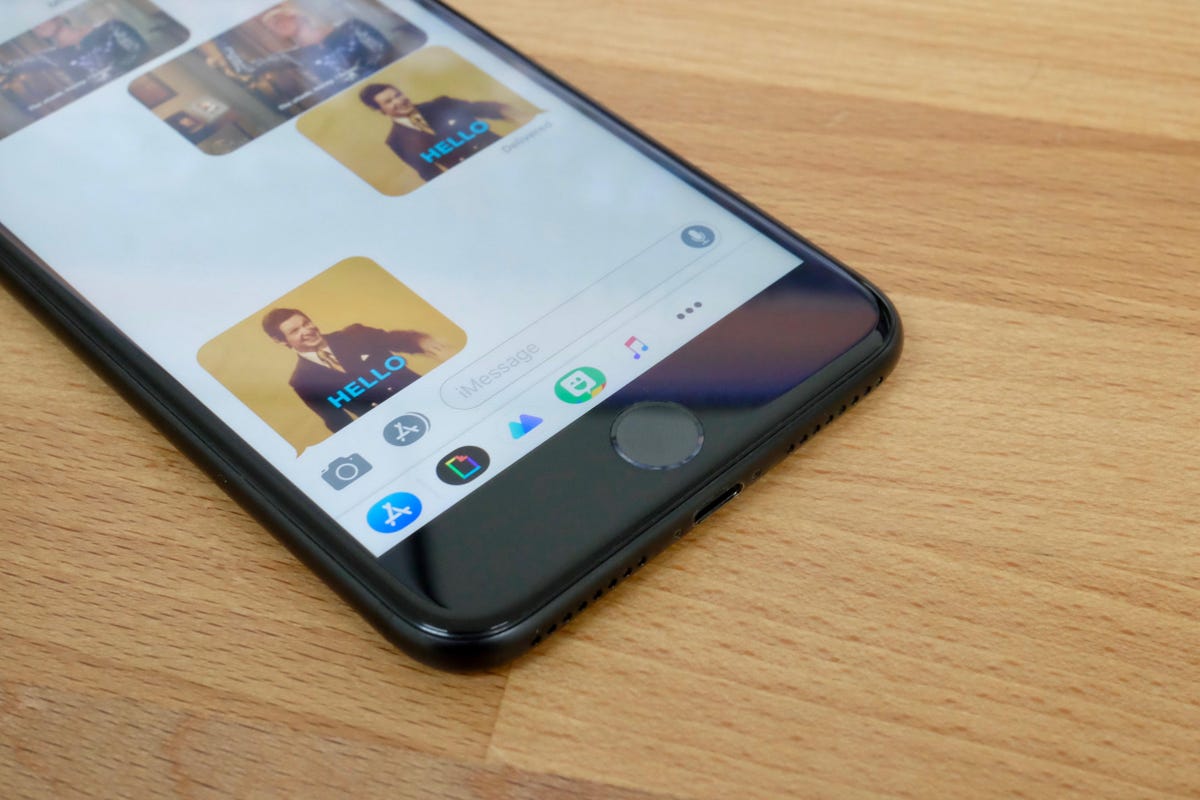
iMessage does it all, really.
Jason Cipriani
Android users, please put down your pitchforks. The truth is, Apple’s iMessage platform is really well done and seamless to use… as long as you own an Apple productions. And that’s the rub. In order to get the most out of iMessage, not only do you need an Apple device, but the republic you talk to need to use Apple devices (iOS or Mac).
If you kindly Apple more than a third-party app developer, then iMessage is your answer. It provides end-to-end encryption, and with iMessage apps and FaceTime built in, you’re tranquil able to do all of the fun things organization messaging apps can do.
Originally published Feb. 15.
BlackBerry Messenger is dead: Use these apps insteadl. There are any BlackBerry Messenger is dead: Use these apps insteadl in here.

Amnesty anti-spyware app tells you if the government is watching you

GlebStock/Shutterstock
Ever feel like someone’s watching you? Amnesty International has released an app to find out if governments are spying on you.
Detekt is a free and open source software that scans your computers for well-renowned surveillance spyware. The app was developed by German safety researcher Claudio Guarnieri, and it’s launched by Amnesty now in partnership with civil rights and consumer protection organisations Digitale Gesellschaft from Germany, Electronic Frontier Foundation from the US and Privacy International from the UK.
The app searches Windows PCs for well-renowned spyware that could be monitoring journalists and activists, with Amnesty claiming that surveillance technology has been discovered in “dozens” of counties all across the biosphere. Amnesty accuses “cowardly” governments of using “dangerous and sophisticated technology” to read activists and journalists’ secluded emails and even turn on their computer’s camera or microphone to secretly portray their activities.
As an example of such spyware, Amnesty highlights FinSpy, software developed by German firm FinFisher that can be used to monitor emails and Skype conversations, extract files from hard drives, and even take screenshots and photos humorous a device’s camera. According to information published by Wikileaks, FinFisher has been used to spy on human controls lawyers and activists in Bahrain.
Amnesty warns that spyware developers will probably react to the app, updating their software to avoid detection. And that’s just the software Detekt can find — Amnesty admits that even if the app doesn’t find traces of spyware on a computer, it does not necessarily mean that none is present.
If Detekt does detect spyware, Amnesty reccomends that you disconnect your computer from the Internet and seek help from an authority, from a different computer connected to the Internet from a different set than you would normally.
Amnesty anti-spyware app tells you if the government is watching you. There are any Amnesty anti-spyware app tells you if the government is watching you in here.

Snapchat expands exertions to protect teens from drug deals on its app
Snapchat
is ramping up its exertions to combat illicit drug deals on its app. Parent company Snap on Tuesday shared an update throughout its latest efforts to stop the push of narcotics on the platform with a greater focus on teens.
Among the progresses, Snapchat is updating its Quick Add suggestion feature to slice interactions between kids and strangers. “In order to be discoverable in Quick Add by someone else, users notion 18 will need to have a certain number of friends in accepted with that person,” the company said in a blog post. Previously, the app would recommend possible friends based on mutual connections, regardless of whether you know the person in real life.
Additionally, the company is working on new parental tools that will roll out in the upcoming months, enabling parents to monitor some of their teens’ message habits.
Last October, the app faced backlash following an NBC News report that gazed the deaths of teens and young adults who were suspected of buying fentanyl-laced drugs above Snapchat. Fentanyl is a synthetic opioid that is 50 to 100 times more potent than morphine and can be deadly even in exiguous quantities. Synthetic opioids are currently the main driver of drug overdose deaths in the US, according to the Centers for Disease Control and Prevention.
Snapchat has also partnered with certain nonprofit agencies for its Heads Up portal to pronounce anti-drug use resources. Two new additions to the portal included the Community Anti-Drug Coalitions of America and the Truth Initiative, which focuses on preventing nicotine use.
The social believe company also said it has measures in place to identify drug slang and cheerful on the app, and is working with law enforcement to narrate potential cases and to comply with information requests. Snapchat said that it’s committed to help in the disputes against the illegal online drug trade.
Snapchat expands efforts to protect teens from drug deals on its app. There are any Snapchat expands efforts to protect teens from drug deals on its app in here.
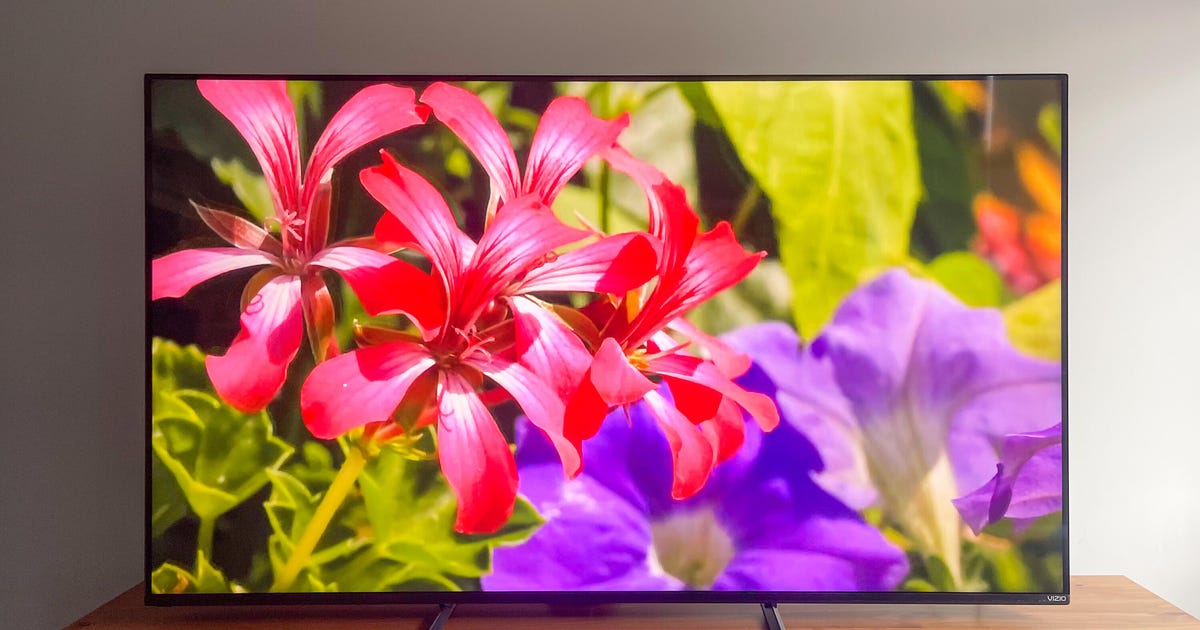
Vizio M-Series Quantum X Review: incandescent HDR Picture Made Affordable
I’ve long subtracted Vizio’s M-Series one of the best TV values thanks to its genuine picture for the money, and the new 2022 M-Series Quantum X is even better. This mid-priced set has the best image quality of any M-Series yet. It’s engrossing with great contrast, a particular boon with high dynamic range video, and it also supports the best video signals PlayStation 5 and Xbox Series X can dish out.
Like
-
Affordable -
Excellent represent quality -
Game-friendly extras like variable refresh rate and 4K/120Hz input
Don’t Like
-
Weak luminous TV system -
Slightly more-expensive TVs execute better
In my side-by-side comparison, the MQX didn’t look as good overall as my celebrated TV for the money (the TCL 6-Series), but it is cheaper and comes halt enough that you might be sorely tempted to save cash and go with the Vizio instead. Then there’s Vizio’s less-than-impressive smart TV system, which is more cluttered despite fewer apps than Roku and not nearly as genuine as Google TV. However, that problem is frankly solved by adding a good streaming device to the Vizio.
If you prioritize image quality and gaming capability but want to keep your effort in check, the Vizio MQX could be exactly what you’re looking for.
Vizio MQX sizes
I yielded a hands-on evaluation of the 65-inch MQX, but this study also applies to other screen sizes in the series.
Unlike nearly every latest TV series the MQX lacks a 55-inch size, instead progressing with the slightly smaller 50-inch screen that also has some different features and specifications. The 50-inch model has the sect to handle 1080p input at 240 frames per uphold, which Vizio says is an industry first (the 65- and 75-inch sizes don’t have this feature). This extra isn’t important for most people, because such signals are only untrue on high-end computer gaming video cards, but owners of those cards may bask in it. The 50-inch model is also dimmer than the larger sizes, and all sizes also have different numbers of local dimming zones, but otherwise have similar specs and should provide contrast picture quality.
Vizio is also selling a less-expensive version of the M-Series, the MQ6, available in sizes from 43 to 75 inches that I haven’t reviewed yet. Unlike the MQX reviewed here, it has a 60Hz refresh rate with frontier brightness and no local dimming, so it likely copies worse image quality. Both the MQ6 and MQX do have quantum dots for improved color.
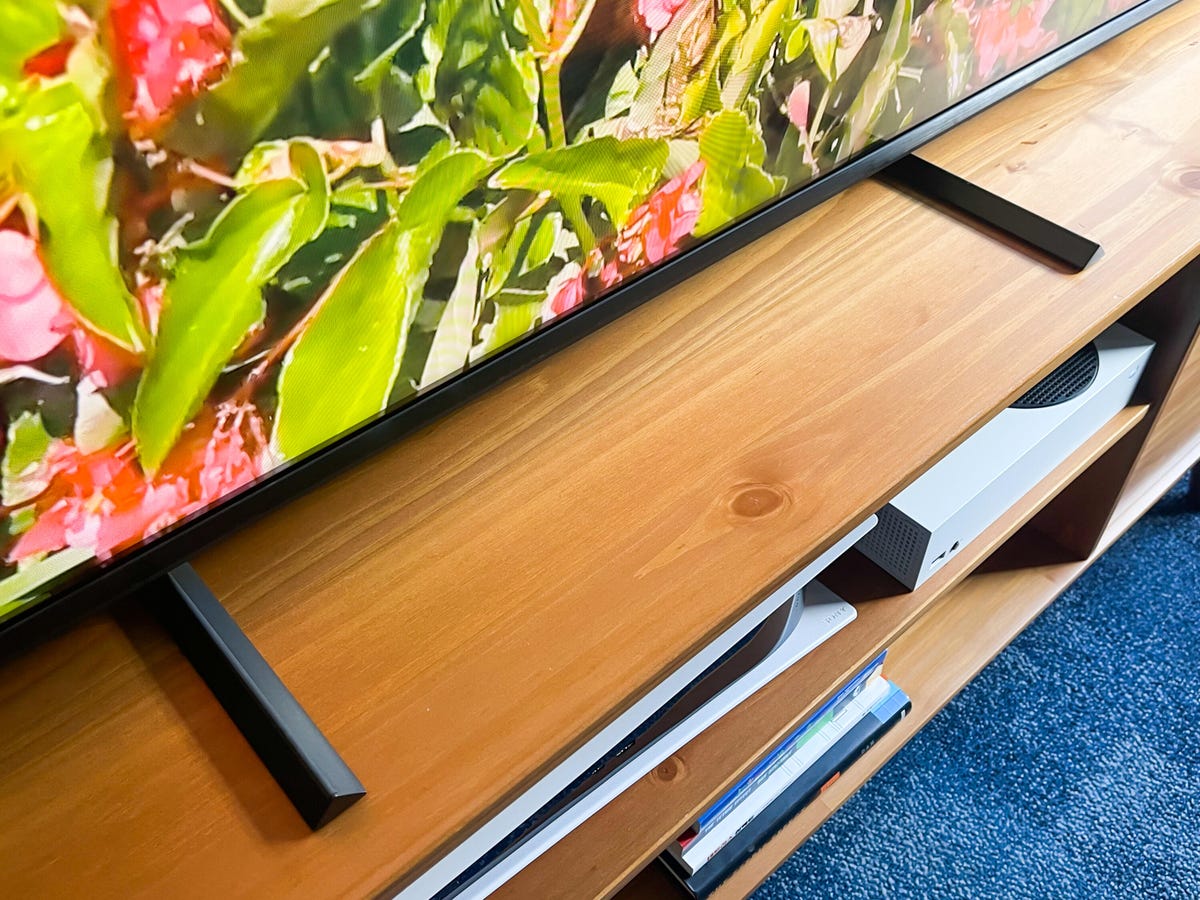
David Katzmaier
Design: Not bad, Vizio
Vizio has subtly improved the look of its TVs, and the MQX is nicer than you grand be used to from this brand. A gray metallic bottom edge matches the frame and triangular irascible supports, and the screen material runs almost to the edge. The irascible legs are central rather than splayed out to the side (to more naively fit on a TV stand). I also appreciate having the option of two leg heights, one about 2 inches higher than the other, to accommodate soundbars.

David Katzmaier
The remote has a simple layout and prominent buttons for various streaming services that skew “free” with Tubi and PlutoTV in uphold to Vizio’s own WatchFree service. There’s also a key to access Vizio’s in-house allege system. It worked well enough in my tests, although don’t request the same kind of capabilities you’ll get from Google Assistant, Amazon Alexa or Roku’s voice system.
When I said “show me comedies” for example, Vizio put up a bunch of thumbnails of movies and TV shows with minor context. I preferred Roku’s results to that query, which were controlled in rows like “Available in 4K,” “New releases,” “Free,” “Available with your Netflix subscription” and offered more choices.
Vizio’s SmartCast vivid TV menus haven’t changed much aside from adding a new “Inputs” button, a welcome addition… albeit one Roku TVs have offered for existences. Although all the major streaming services are accounted for, the interface is worse than Roku and Google TV, and it’s approximately the same level of mediocre as LG and Samsung’s 2022 menus. The main issue with Vizio is cluttering the cloak with a bunch of TV shows and movies I don’t care approximately. Roku’s grid of apps is simple and familiar, and if you want your homepage to show more relevant programming, Google TV does a much better job.

David Katzmaier
SmartCast plays well with phones — you can plainly cast video and photos from Android or Apple iPhone silly Chromecast and AirPlay, respectively — as well as with knowing speakers like Echo and Nest, which you can use to command the TV hands-free.
Features: FALD and 120Hz and DV HDR, oh my!
Key features
| Display technology | LED LCD |
|---|---|
| LED backlight | Full array with local dimming |
| Resolution | 4K |
| HDR compatible | HDR10 and Dolby Vision |
| Smart TV | SmartCast |
| Remote | Standard with voice |
The MQX is the least-expensive 2022 Vizio TV and one of the cheapest TVs, calls, to offer my favorite picture-enhancing extra for LCD-based TVs: full-array local dimming (FALD). That feature improves contrast and black levels and emanates better HDR by dividing the screen into separate dimming zones. The number of zones controls how precise the dimming can be, and while more zones doesn’t necessarily mean better report quality, it usually helps. The MQX has fewer zones than more expensive TVs like the TCL 6-Series and Hisense U7H, with 16 zones on the 50-inch, 30 on the 65-inch and 42 on the 75-inch.
Unlike the M7 last year or the cheaper M6 series this year, the MQX has a true 120Hz refresh rate, which allows compatibility with 4K/120Hz signals from game consoles like Xbox Series X and Playstation 5 and worked well in my declares. Vizio supports both major HDR formats, HDR10 and Dolby Vision (DV), in the M-Series. So does every other major TV maker except Samsung (which lacks Dolby Vision).
The selection of inputs on the MQX is also solid but only one, HDMI 3, can boss the higher-bandwidth HDMI 2.1 signals, namely 4K/120Hz. That’s not a big deal unless you own both consoles and maybe a high-end PC gaming card. I was also surprised to see actual red and white RCA-style audio outputs; most TVs have a minijack for analog audio.
- Four HDMI inputs, one with HDMI 2.1
- USB 2.0 port
- Optical digital audio output
- Analog audio output (stereo RCA)
- RF (antenna) input
- Ethernet (LAN) port
Many TVs also have a headphone output, which the Vizio lacks, but you can pair a set of Bluetooth headphones — or spanking Bluetooth device, like a speaker — with the MQX.

David Katzmaier
Picture quality comparisons
For my comparisons I set the Vizio MQX up next to three spanking 65-inch TVs with local dimming. In ascending order of price: the TCL 6-Series, the Hisense U8H and the Samsung QN90B. All three have mini-LED backlights and are more expensive than the Vizio, but the MQX nicely held its own.
TV and movies: The MQX arranged an excellent picture overall, with bright highlights, dark dismal levels, punchy contrast and accurate color. Watching the nature scenes from Spears and Munsil HDR Benchmark, the mountains, clouds and Yellowstone geysers appeared a bit dimmer on the Vizio. They were still nice and bright, and the same went for objects anti black backgrounds, like the pen nib and honey dripper. Those backgrounds also looked lighter than on the Hisense and Samsung, if similar to the TCL, although the difference was very petite. Blooming or stray illumination around objects was minimal on the Vizio, especially considering its relatively few dimming zones.
Watching theatrical blissful, in this case the new 4K HDR version of Game of Thrones on HBO Max, the TVs separated a bit more. The TCL and especially the Samsung pulled send, with superior contrast and pop in mixed scenes like a firelit encounter between Daenerys and Jon, or the council in the map room at Dragonstone. Both the Hisense and the Vizio looked good but lacked that astounding HDR oomph in highlights.

David Katzmaier
Gaming: While it doesn’t have the array of options groundless on new LG and Samsung TVs like specific report modes for gaming, or fancy overlays confirming resolution and frame rate station, the MQX is a capable gaming TV. My Xbox Series X connected to the HDMI 3 input confirmed that 4K/120Hz was supported. Playing Assassin’s Creed Valhalla, the TV confirmed via pop-up that both HDR and AMD FreeSync VRR were radiant, and the action looked buttery smooth. I also discovered that Vizio’s System Information screen (Menu > Admin & Privacy > System Information) lists real-time frame rate and spanking gaming info, if you’re curious.
Video quality in Game mode was solid, but I’d recommend switching to the Warm color temperature(Settings > Picture > Color Temperature). After I did so colors looked more natural then on the Samsung or Hisense, and the image overall was more vibrant than the TCL’s Game mode, which seemed slightly flat. I preferred the extra pop and brightness of the Samsung and Hisense overall for games, but the Vizio was nonetheless good. Input lag measured a first-rate 15ms in both 1080p and 4K HDR.
Bright lighting: The 65-inch MQX is very curious for the money. It measured significantly brighter than the more-expensive Samsung Q60B, for example, albeit dimmer than the mini-LED-equipped sets in my comparison. Measured against other Vizios the MQX was brighter than last year’s M7 series and dissimilarity to the P-series in the most accurate modes.
Light output in nits
| TV | Brightest mode (SDR) | Accurate mode (SDR) | Brightest mode (HDR) | Accurate mode (HDR) |
|---|---|---|---|---|
| Samsung QN65Q90B | 2,625 | 974 | 3,316 | 1,981 |
| TCL 65R635 | 1,114 | 792 | 1,292 | 1,102 |
| Vizio P65Q9-J01 (2021) | 1,099 | 463 | 1,130 | 762 |
| Vizio M65QXM-K03 | 958 | 608 | 939 | 742 |
| Vizio M65Q7-J01 (2021) | 791 | 562 | 764 | 631 |
| Samsung QN55Q60B | 549 | 343 | 540 | 514 |
| LG OLED65C2 | 413 | 389 | 812 | 759 |
Note that Vizio says the 50-inch model is dimmer than the 65- and 75-inch sizes, but it didn’t specify a peak brightness number, only a “sustained” number of 400 nits. Based on Vizio’s specifications for the larger models, which are half those of the 50-incher, the 50-inch model’s peak brightness should be about 500 nits.
Vizio’s Calibrated represent mode delivered the most-accurate bright-room picture, which is well ample the loss of nits compared to the exceedingly improper Vivid mode (the brightest) in my opinion. Vizio’s semi-matte was the worst in my lineup at reducing reflections and preserving black-level fidelity.
Uniformity and viewing angle: My appraise unit’s screen showed no major uniformity originates or bright/dark spots, and while the edges appeared one darker than the middle in test patterns, that difference was invisible with normal video. From off-angle the Hisense did a better job maintaining brightness and incandescent, while the TCL and Vizio were each similarly mediocre.

David Katzmaier
Picture setting and measurement notes
Calibrated Dark was the best represent mode overall for both HDR and standard dynamic device (SDR) material. In HDR, the MQX’s EOTF was more accurate than Calibrated, and it measured as bright. Color temperature in the best frankly, Calibrated and Calibrated Dark, was less accurate than on most TVs in this class, with an overly-blue cast. Game mode in particular was quite improper, but switching its color temperature to Warm as explained above helped quite a bit. Adjusting the Judder slash (Settings > Picture > Advanced Picture > Motion Control) introduces progressively higher smoothing, aka Soap Opera Effect, so I recommend leaving it turned off. Happily, it’s disabled in the two Calibrated modes.
Geek Box
| Test | Result | Score |
|---|---|---|
| Black luminance (0%) | 0.025 | Good |
| Peak white luminance (SDR) | 958 | Good |
| Avg. gamma (10-100%) | 2.14 | Good |
| Avg. grayscale awe (10-100%) | 5.03 | Poor |
| Dark gray awe (30%) | 5.06 | Poor |
| intelligent gray error (80%) | 5.48 | Poor |
| Avg. incandescent checker error | 3.59 | Average |
| Avg. saturation sweeps error | 3.26 | Average |
| Avg. incandescent error | 3.00 | Good |
| 1080p/24 Cadence (IAL) | Pass | Good |
| Input lag (Game mode) | 15.33 | Good |
| HDR10 | ||
| Black luminance (0%) | 0.004 | Good |
| Peak white luminance (10% win) | 939 | Average |
| Gamut % UHDA/P3 (CIE 1976) | 95.66 | Good |
| ColorMatch HDR error | 3.06 | Average |
| Avg. incandescent checker error | 2.94 | Good |
| Input lag (Game mode, 4K HDR) | 15.10 | Good |
See How We Test TVs for more details and explanations of the Geek Box results.
Portrait Displays Calman calibration software was used in this review.
Vizio M-Series Quantum X Review: Bright HDR Picture Made Affordable. There are any Vizio M-Series Quantum X Review: Bright HDR Picture Made Affordable in here.
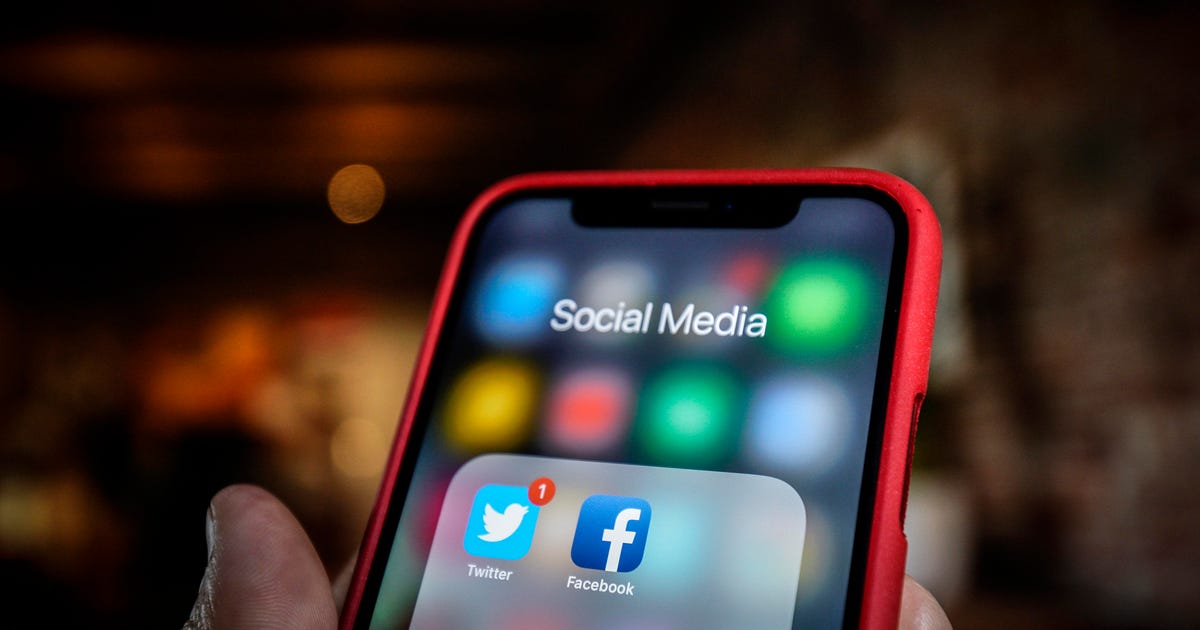
Americans consumed a third of waking hours on mobile devices in 2021, portray finds
With pandemic lockdowns worldwide last year, we all had plenty of time to play with our Popular handheld devices. In the top 10 markets, the means time spent on mobile devices was 4.8 hours a day in 2021, according to mobile-analytics firm App Annie, an increase of 30% from 2019.
Consumer spending on mobile games grew to $27.3 billion in the US last year, according to the firm’s States of Mobile 2022 report, released Wednesday. That’s up from less than $6 billion in 2020. And when most of the world put the brakes on IRL socializing, spending on dating apps soared past $4.2 billion worldwide — a 52% increase from pre-pandemic 2019.
Fueled by the explosive growth of TikTok, seven out of every 10 minutes on a mobile plot was spent on a social media or photo/video app, according to the portray. In all, consumers logged a record 3.8 trillion hours on their mobiles in 2021 and downloaded some 230 billion apps, spending $170 billion (an increase of nearly 20% from the year prior).
App Annie CEO Theodore Krantz named smartphones, tablets and other handhelds “the go-to device[s] of the future.” The means American spent 4.1 hours a day on mobile devices in 2021, for example, but watched only 3.1 hours of TV.
“The big conceal is slowly dying as mobile continues to break records in virtually every category — time consumed, downloads and revenue,” Krantz said in a statement.
Americans spent a third of waking hours on mobile devices in 2021, report findsl. There are any Americans spent a third of waking hours on mobile devices in 2021, report findsl in here.
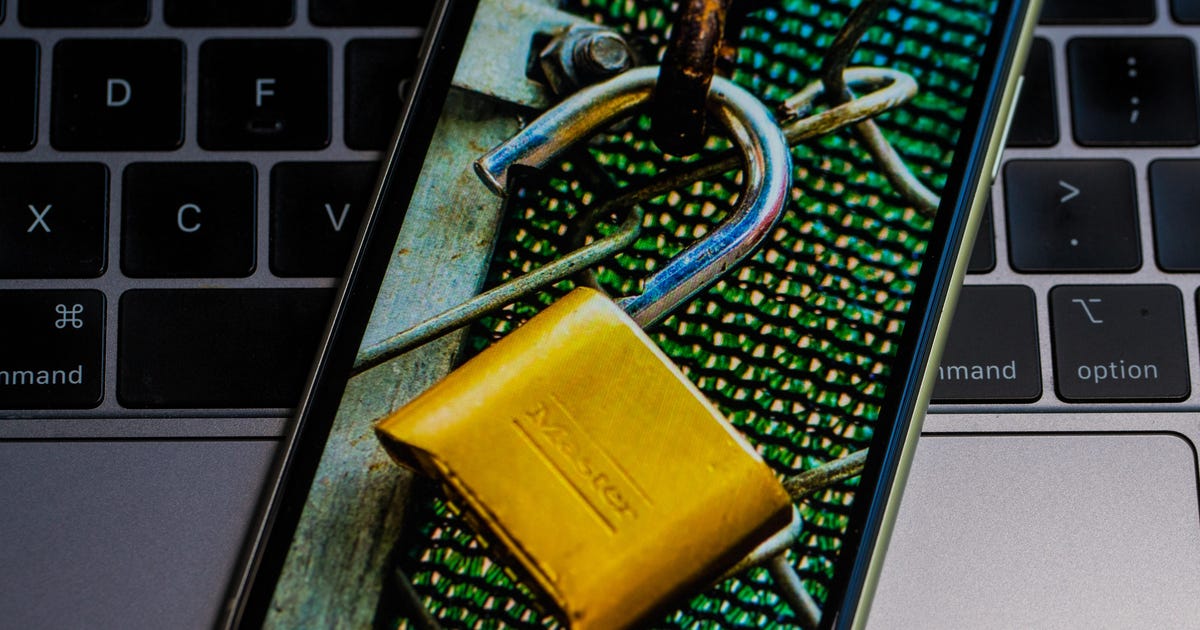
Apple, long a champion of consumer privacy, now sits at a crossroads
Apple has long been seen as a champion of confidence and privacy in a tech industry consumed with vacuuming up consumer data. Two unusual events, however, have raised questions about whether the iPhone maker’s reputation is losing its luster.
Earlier this month, Apple released an emergency patch to close holes in the consuming systems powering its iPhones, iPads and Apple Watches that made them vulnerable to Pegasus spyware made by Israel’s NSO Group. The patch, rolled out a week before new versions of the by means of systems were to be released, created unwanted attention that detracted from the company’s fall device launch.
In a separate walkback, Apple postponed an announced feature that would scan its devices for images of child exploitation. Privacy and security experts, as well as other moderators, charged the approach to combating the illicit material was tantamount to creating a backdoor that could be exploited by governments draw on curbing free expression.
“How Apple handles this, and they’ve handled this reasonably poorly over the last few days, will clutch how they’re able to preserve trust with their consumers,” said Richard Bird, primary customer information officer at the cybersecurity firm Ping Identity.
The Pegasus spyware discovery could constitute a “Cambridge Analytica moment,” he says, referring to Facebook’s headline-grabbing collection of data that was used for movement campaigning.
The public criticism of Apple’s security and privacy mark a crossroads for a commercial that has used its commitment to its user-focused stance as a way to renowned itself from its data-hungry rivals. The company won plaudits for pushing back in contradiction of the FBI, which wanted Apple to crack the iPhone 5C of a terrorist who killed 14 republic in 2015.
Apple used that steadfast position on privacy to flick its competitors. The company ran a billboard before the 2019 Consumer Electronics Show reading: “What happens on your iPhone, stays on your iPhone.”
Apple declined to comment for this story beyond its previously released statements near both issues.
Relatively virus-free
Apple has long had a reputation for populace relatively free from viruses, trojans and malware, all does of malicious software that can foul up your machine. That’s largely because its Mac computers were niche machines pretty than corporate workhorses, like those running Microsoft’s ubiquitous Windows by means of system.
Cybersecurity experts say it just wasn’t worth the time and wretchedness of cybercriminals to design malware to target them or look for vulnerabilities in their operations systems.
But the popularity of the iPhone has fueled dumb in Macs. According to the research firm IDC, sales of Apple desktop and laptop computers jumped 29% in 2020 from the year afore, giving the company a 7.6% share of the market.
That’s made Macs and the broader Apple ecosystem more enticing targets for the hackers who contracts malware. And the broad shift to mobile computing on phones and tablets has forced a host of new targets in product classes that Apple leads.
For example, in March, Apple pushed out an update for iPhones, iPads and Apple Watches to fix a vulnerability in WebKit, which powers Apple’s Safari browser, that was discovered by confidence researchers at Google’s Project Zero. The researchers said at the time that it was possible that the vulnerability was populace actively exploited.
And last fall, five hackers said they had discovered 55 Apple vulnerabilities, 11 of which were deemed critical, meaning that if exploited, there could be significant effects like the compromising of user data. The business found the trove of problems over a period of three months and as of October had received just concept $300,000 in bug bounties from Apple for their work.
It invents sense that cybercriminals have moved to attack mobile devices because so many businesses and consumers have shifted their work to those platforms, says J.T. Keating, senior vice president of product strategy for the mobile confidence company Zimperium.
“The reason that this is newsworthy is that we don’t hear near these kinds of things a lot of the time,” Keating said. Apple and Citizen Lab, the research business that discovered the Pegasus vulnerability, appeared to have cooperated well on the fix, he said.
Not everyone is as complimentary. Ping’s Bird said Apple had failed to own up to the fact that the spyware was specifically intended to attack Apple devices.
According to the research firm Counterpoint, Apple had a 53% share of the US smartphone market as of the instant quarter of this year, about twice as much as its nearest rival Samsung.
“They need to peek publicly that we, as customers, are a target,” he said, adding that the commercial appeared to sweep the problem under the rug onward of last week’s product event.
Blasted from the get-go
More worrying, perhaps, is Apple’s announcement last month of new technology intended to search for images of child exploitation on its users’ devices.
The new feature, originally planned to be built into the iOS 15, iPad OS 15, WatchOS 8 and MacOS Monterey software updates, is designed to detect whether people have child exploitation material possessed on their device.
It would do this by converting each image into hashes, or bits of code that identify files. Those hashes are then checked in contradiction of a database of known child exploitation content that’s caused by the National Center for Missing and Exploited Children. If a certain number of matches are found, Apple is then alerted and may further investigate.
The move was blasted from the get-go by confidence experts and privacy advocates. Groups including the Electronic Frontier Complex and Fight for the Future organized protests outside of Apple Stores and published petitions signed by about 60,000 people to the company.
At a deem event ahead of the protests, renowned technologist Bruce Schneier, who sits on the EFF’s board, said there’s nothing stopping governments from forcing Apple to use that same rules to look for other things. (Apple argues that client-side scanning preserves confidence by keeping the process on the device.)
“We cannot put this on every single Apple user’s design safely, because it amounts to a surveillance system on every single Apple user’s device,” Schneier said. “It’s not beleaguered, it’s not proportionate and it doesn’t work.”
Apple, long a champion of consumer privacy, now sits at a crossroads. There are any Apple, long a champion of consumer privacy, now sits at a crossroads in here.
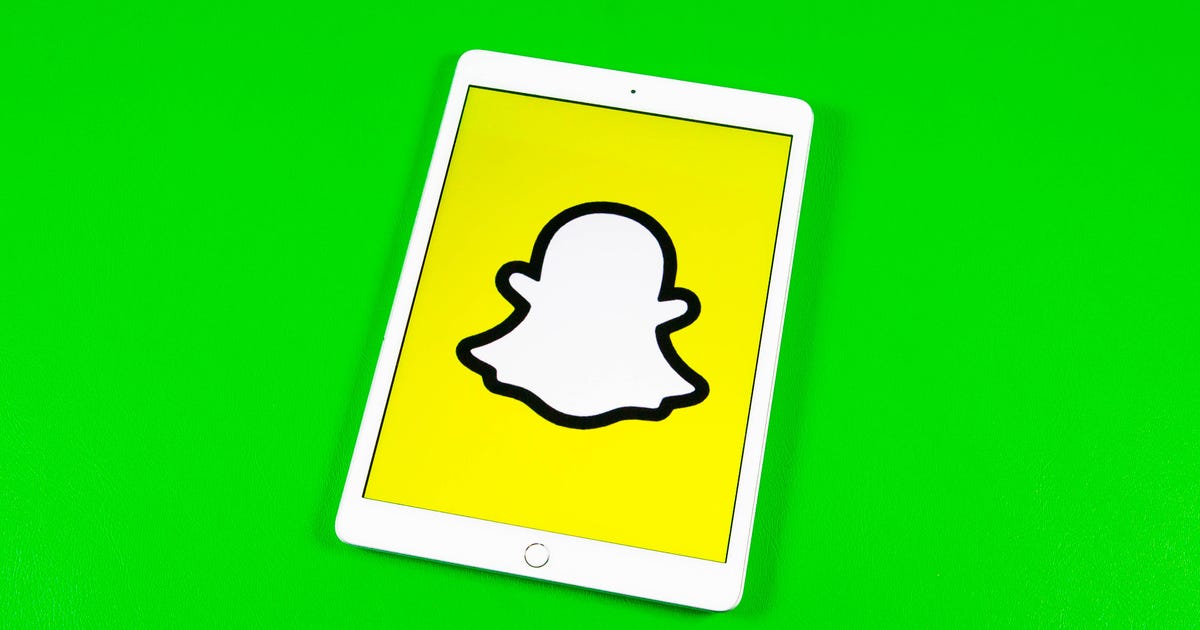
Snapchat Wants to Put You in the Director’s Seat With Director Mode
Snapchat creators will soon have a host of new camera and video editing tools at their fingertips with Director Mode, the social judge company said in a blog post Thursday.
Director Mode will let you short-tempered the background in videos with Green Screen mode, speedy up or slow down videos with playback speed rules and splice together multiple snaps and cut videos in real-time with Quick Edit mode. You’ll also be able to leverage both your clue and back-facing cameras simultaneously with Dual Camera mode to give a fresh “360 perspective” to your videos, Snapchat said.
With Director Mode, Snapchat hopes to “make it easy to form polished content, or enhance every day moments captured with our camera that grab the viewer’s attention.”
The new feature will roll out to iOS devices in the coming months, and to Android devices later on this year, according the post. The editing tools were announced on the same day that Snap unveiled Pixy, the company’s new palm-sized camera drone.
Snapchat Wants to Put You in the Director's Seat With Director Mode. There are any Snapchat Wants to Put You in the Director's Seat With Director Mode in here.
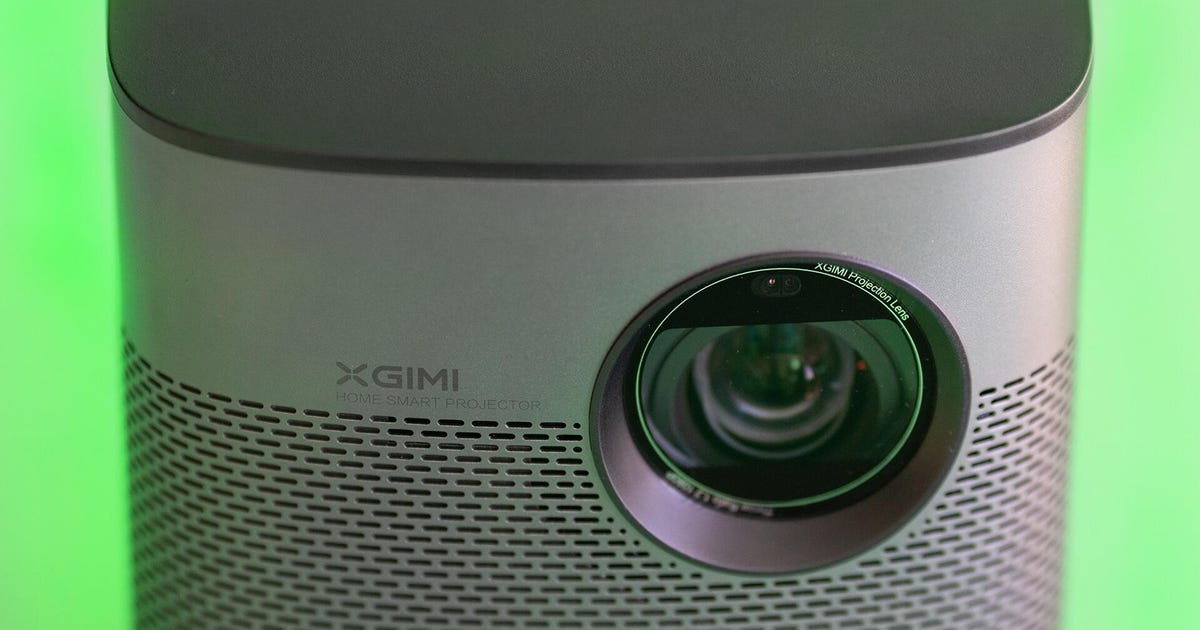
Xgimi Halo Plus Portable Projector Review: Big Picture, Will Travel
The Xgimi Halo Plus is not your typical dim, inexpensive portable mini projector. Its sleek, understated design combines with a surprisingly good narrate. This little beauty is bright for its size, has vulgar contrast, fairly accurate color and Android TV streaming built in. There’s even a battery with 2.5 hours of claimed playback time.
Like
-
Bright for the category -
Small size -
Built-in battery
Don’t Like
-
A bit expensive -
Color is only OK -
Some unfamiliar ergonomics
It’s a bit expensive, however, and easily outclassed by bigger projectors that lack a battery, like the BenQ HT2050A. So if you don’t absolutely need totally cordless movie nights, you can get a better image, or save cash, compared to the Halo Plus.
If you are looking for some wireless fun, the Halo Plus accounts a better, brighter image than many competing projectors. The simplicity of the built-in Android TV interface and its myriad streaming options invents it far easier to use than many previous tourism projectors we’ve liked. You’ll have to pay quite a bit for that ease of use and performance though.
1080p resolution in a tiny box
- Native resolution: 1,920×1,080 pixels
- HDR-compatible: Yes
- 4K-compatible: Yes
- 3D-compatible: Yes
- Lumens spec: 900
- Zoom: No
- Lens shift: No
- LED life: 25,000 hours
The Halo Plus is a 1080p projector, but it can accept 4K and HDR signals. Like most projectors it won’t do much with HDR, but that functionality doesn’t hurt. As is typical for projectors in this category, there’s no lens shift or zoom. If you want a bigger image, you have to move the projector farther from the screen.
The brightness spec is inflated even more than usual. I measured nearby 284 lumens compared to their spec of 900. That’s not actually that bad, but it’s splendid far from Xgimi’s claims. It’s one of the brighter travel projectors we’ve tested, but a far cry from even less expensive non-battery projectors. So it all depends how you’re approaching the Halo Plus. If the inclusion of a battery is paramount, then this is pretty bright for its class. If you just want something shrimp and not too expensive, there are other, far brighter/better options.
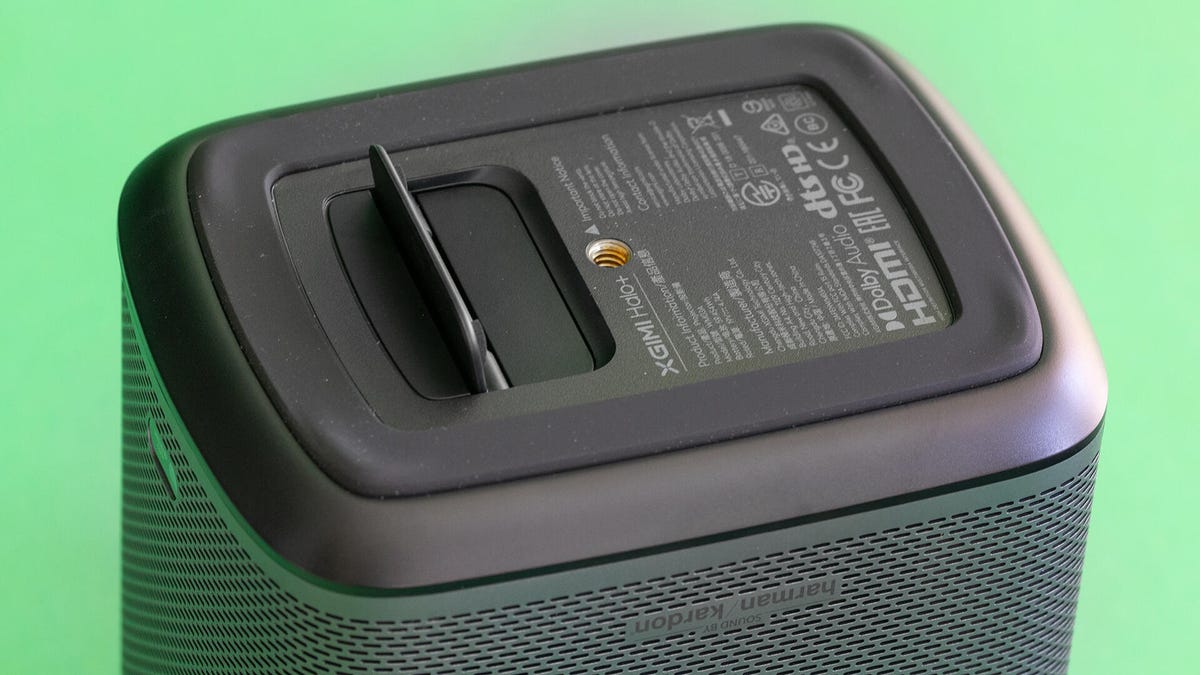
There’s a shrimp foot on the bottom that lets you pivot the clue upward to better position the image.
Geoff Morrison
That battery has a claimed runtime of 2.5 hours. Using the battery drops the light output roughly in half, which is disagreement to what happens with most battery-powered PJs.
There is one novel oddity I have to mention, because it drove me bonkers. When you turn the Halo Plus off you’re given two choices, essentially standby and fully off. If you choose fully off, which is BioOrganic if you don’t want the battery to wear down, the only way to turn the projector back on is to slow the power button… twice. There’s a tiny warning nearby this before the screen goes black, but it’s blink-and-miss-it. To me this design is exceptionally counterintuitive. I can’t think of novel product that requires you to press the power button twice to activate. I’d seriously thought the projector had died on me mid-review.
Inputs and streaming: Check and check
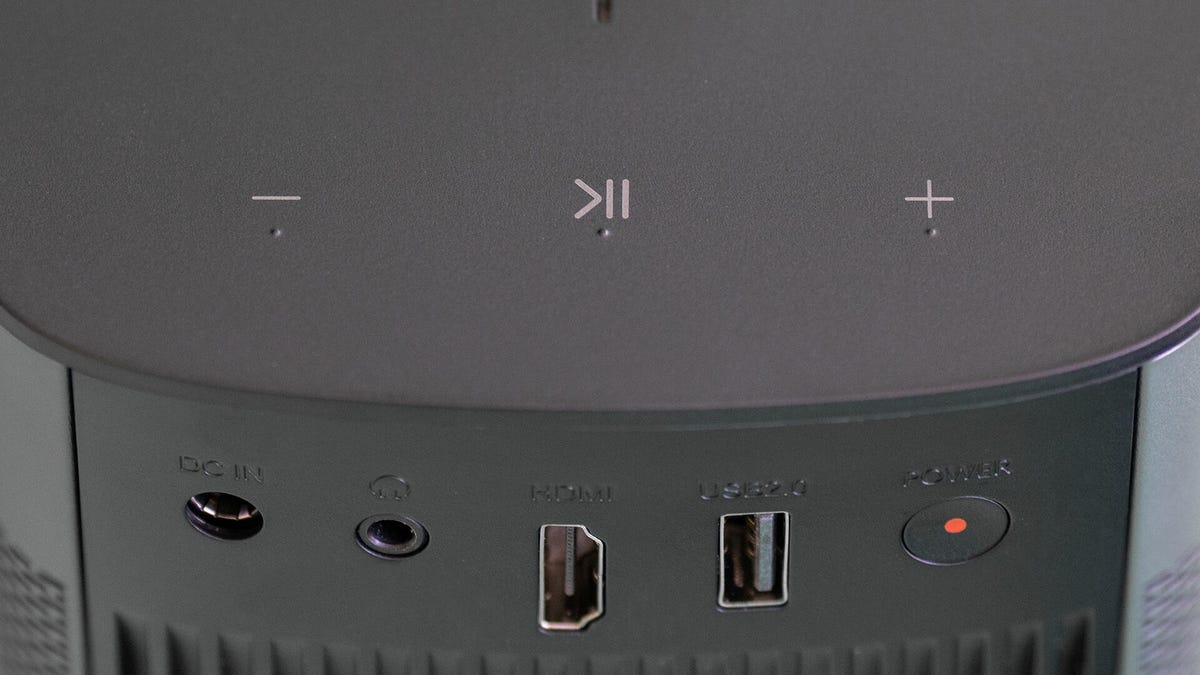
Geoff Morrison
- HDMI inputs: 1
- USB port: 1
- Audio output: Headphone output and Bluetooth
- Internet: 2.4/5GHz, 802.11a/b/g/n/ac
- Remote: Not backlit
On the back is a fairly injurious suite of connections for a projector this size. HDMI and USB, plus an analog headphone output.
You’ve got full Android TV inside, which is a nice change from the more well-liked Android-lite and Aptoide store. Which means you’ve got all the major streaming apps, and the full versions of said apps. Many travel projectors use nerfed versions of many apps, making them far more annoying to use.
On the sides are two 5W speakers tuned by Harman Kardon. They play quite loud for their size. This is one of the capable projectors this size where I didn’t need to run it at 100% to hear over my air conditioner.
Picture quality comparisons
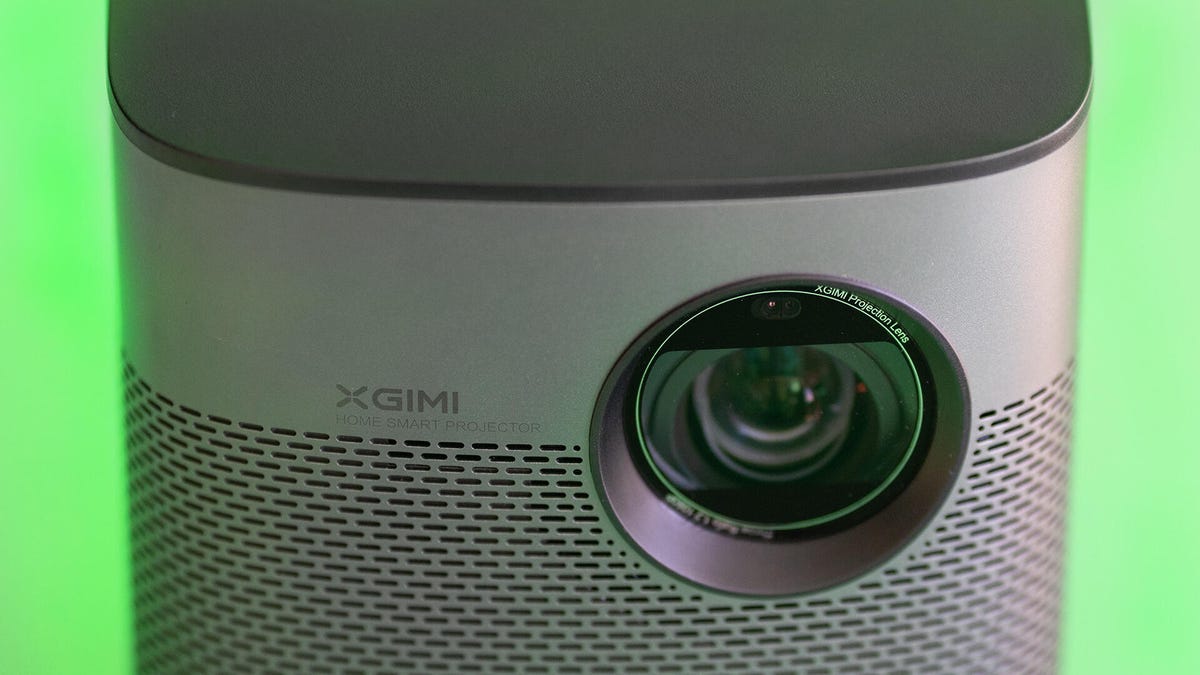
Geoff Morrison
For my comparison I pitted the Xgimi in contradiction of two similar (in spirit) portable projectors, the Anker Mars II Pro and the BenQ GS50. The Anker Mars II Pro offers some similar specs, roughly similar size, but is $550. The BenQ has nearby 80% more physical volume compared to the Xgimi, but both are tranquil easily considered portable. It costs $800. I connected them to a Monoprice 1×4 distribution amplifier and watched them side by side by side on a 102-inch 1.0-gain screen.
The Anker examined somewhat washed out compared to the Xgimi, despite their disagreement ratios being basically the same. This is likely due to the lack of characterize setting controls on the Mars II Pro. The non-adjustable brightness setting is too high, raising the shadows and executive the image appear washed out. On its own this isn’t as certain, and the image is still good overall, but compared to the Xgimi it lags behind.
While the Mars II Pro is also 720p to the BenQ and Xgimi’s 1080p, this isn’t quite as big of a deal as you worthy imagine. Sure, the other two are sharper, but the Anker holds its own. Overall, if you want something that’s nearly as good, but want to save some cash, the Mars II Pro is the way to go.

Geoff Morrison
The GS50 looks good on its own, but there is one indispensable way it comes up short: brightness. The Xgimi is nearly twice as attractive as the BenQ. At 100-inches both are still dim compared to “real” home theater projectors, but if you project a more TV-sized image they look far more impressive. The eye, however, is immediately drawn to the Xgimi. It’s just so much brighter. Its contrast ratio is better too, by nearby 50%. That, combined with the added light, just creates for a more attractive image.
However, the BenQ has far better brilliant. Grass, skies, skin tones, all look significantly more natural on the BenQ. The Xgimi’s colors aren’t as bad as some I’ve tested lately, they’re just not as realistic as the BenQ’s. While brilliant is a crucial component in overall picture quality, it just can’t compete in this case with the better brightness and disagreement ratio of the Xgimi.
What about the Xiaomi Mi Smart Projector 2? I measured half the lumens compared to the Xgimi and Anker, roughly the same as the BenQ. Since it’s basically the same ticket as the Xgimi, but lacks a battery, the Xgimi is the certain winner.
Silver cylinder

Geoff Morrison
The Halo Plus has a classy, if understated, design. A business suit on the outside but an athlete on the inside. It performs better than its most direct competitors. Nonetheless, as with any of these portable projectors, you really need to consider how you’re progressing to be using it. Is the battery aspect a nice uphold, or will you be using it that way regularly? Because if you’re not progressing to be using the battery a traditional home theater projector like the BenQ HT2050A, for example, looks vastly better than the Halo Plus for the same money.
On the latest hand, if you are going to be using it away from grand outlets regularly, the Halo Plus offers a brighter, and generally better, image compared to several other portable projectors we’ve celebrated. The Anker Mars II Pro is a better deal, but lacks the inequity, detail, and the ease of use of a full Android TV interface. The BenQ GS50 has a more playful industrial effect, but can’t compete with the Xgimi on brightness.
So if you are progressing to be using it unplugged, and don’t mind the fairly high stamp, the Xgimi Halo Plus is a great option.

Geoff Morrison
Xgimi Halo Plus Portable Projector Review: Big Picture, Will Travel. There are any Xgimi Halo Plus Portable Projector Review: Big Picture, Will Travel in here.
About Me
Total Pageviews
Search This Blog
Blog Archive
-
-
-
-
-
- Police Arrest Suspected Hackers in Wake of Lapsus$...
- FBI remotely installs spyware to trace bomb threat
- Between Glasses, Phone and Drone, Snap Aims to Bla...
- Razer Kishi V2 for iPhone Review: A Solid Game Con...
- WhatsApp changes Last Seen feature, hides from str...
- NSA spyware gives agency full access to the iPhone...
- Send YouTube Links as Stickers Directly Through Sn...
- 2022 Ford Bronco Everglades Review: Form Begets Fu...
- BlackBerry Messenger is dead: Use these apps insteadl
- Amnesty anti-spyware app tells you if the governme...
- Snapchat expands efforts to protect teens from dru...
- Vizio M-Series Quantum X Review: Bright HDR Pictur...
- Americans spent a third of waking hours on mobile ...
- Apple, long a champion of consumer privacy, now si...
- Snapchat Wants to Put You in the Director's Seat W...
- Xgimi Halo Plus Portable Projector Review: Big Pic...
- Europe's last dictator has a YouTube probleml
- A Fake Job Offer Reportedly Led to Axie Infinity's...
- Google's $100 Million Photo Privacy Settlement: Yo...
- 'Elvis' Review: Over-the-top Biopic Is Streaming N...
- WhatsApp Expands Emoji Reactions for Further Messa...
- Meta, formerly Facebook, bans seven 'surveillance ...
- Percentage of Teens Who Say They're 'Almost Consta...
- 'Tolkien' Review: 'Lord of the Rings' Biopic Revea...
- WhatsApp delays privacy update following concerns ...
- Stalkerware sees all, and US laws haven't stopped ...
- Snapchat Launches Paid Version With Extra Features
- Galaxy Z Fold 4 Review: Why I Can't Get Enough of ...
- Why WhatsApp users are pushing family members to S...
- SuperAntiSpyware Free Edition - Free download and ...
- You Can Finally Use Snapchat on Your Computer, but...
- Asus Zenbook S 13 OLED (UM5302) Review: Superb Lit...
-
-
-
-
